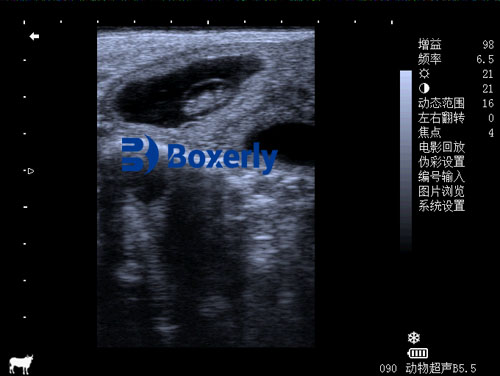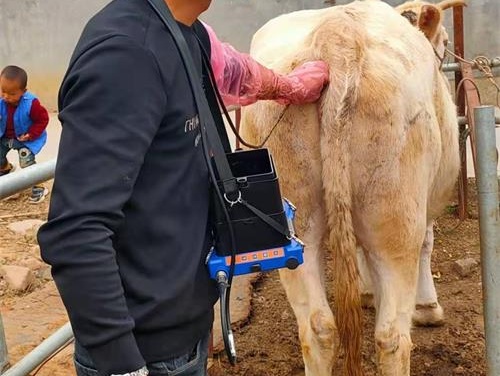Ultrasonic instruments have become an essential tool for cattle farming, providing valuable insights into various aspects of herd management. These devices are particularly effective in assessing the health, development, and overall condition of cattle. By using sound waves to produce images of internal organs, ultrasound technology helps farmers and veterinarians make informed decisions regarding cattle health and productivity. In this article, we will explore the key measurements and assessments that ultrasonic instruments can provide for cattle.
Pregnancy Diagnosis
One of the most common uses of ultrasound in cattle farming is pregnancy diagnosis. Ultrasonic devices allow farmers to accurately determine whether a cow is pregnant. This not only confirms pregnancy but also helps in identifying the number of fetuses. In addition, ultrasound technology can provide information on the stage of pregnancy, allowing farmers to better plan breeding schedules and predict calving dates. Early pregnancy detection also plays a critical role in managing the reproductive cycles of cows, ensuring optimal use of breeding resources and improving herd productivity.

44-day pregnant cow ultrasound image
Fetal Health Assessment
Another critical application of ultrasound in cattle farming is the assessment of fetal health. By using ultrasound to monitor the development of the fetus, veterinarians can detect potential health issues early in gestation. This allows for timely intervention and treatment, ensuring the health and well-being of both the cow and its unborn calf. Whether it is checking for developmental abnormalities or verifying the viability of the fetus, ultrasound provides a non-invasive way to assess fetal health.
Reproductive Health Evaluation
Ultrasound instruments also play a vital role in evaluating the reproductive health of cows. Ultrasound technology can be used to examine the ovaries, uterus, and other reproductive organs for signs of infections, cysts, or other conditions that might affect fertility. Detecting issues early on enables veterinarians to address reproductive challenges before they lead to more serious health problems or reduced fertility. This is especially valuable for managing breeding programs and ensuring cows are kept in optimal reproductive condition.

Body Condition Scoring
Maintaining a healthy body condition is crucial for cattle productivity and overall well-being. Some ultrasonic devices are capable of measuring the thickness of fat layers and muscle mass in cattle. This is especially useful in assessing the body condition of cows and bulls, which plays a significant role in their reproductive success and overall health. A proper body condition score ensures that animals are neither over-conditioned nor under-conditioned, both of which can negatively affect fertility and health.
By using ultrasound to measure body condition, farmers can optimize feeding programs, monitor weight loss or gain, and take action to prevent health issues related to obesity or malnutrition. For instance, cows that are too thin may struggle with fertility, while over-conditioned cattle may face issues during calving.
Internal Organ Evaluation
Ultrasonic instruments are also capable of visualizing internal organs, such as the liver, kidneys, and heart. These evaluations can help diagnose various health issues like liver disease, kidney problems, and heart conditions. By using ultrasound to monitor the internal health of cattle, farmers and veterinarians can catch problems before they lead to more serious complications. Early detection of internal organ issues is crucial for maintaining the overall health of the herd and preventing costly treatments later on.
Lameness and Soft Tissue Evaluation
Lameness in cattle can result from injuries, infections, or other conditions affecting the legs, hooves, tendons, and ligaments. Ultrasound technology can be used to evaluate these soft tissues, providing a detailed image of any damage or abnormal conditions. Identifying lameness early allows for timely intervention, whether it involves treating injuries, addressing infections, or adjusting the animal's environment to improve its mobility.
By regularly using ultrasound to monitor soft tissues, farmers can improve herd mobility and ensure the comfort and productivity of their cattle. Lameness can be a significant cause of reduced productivity and increased veterinary costs, so early detection and management are crucial.
Overall Impact on Cattle Management
The use of ultrasonic instruments in cattle farming provides numerous benefits, ranging from improved pregnancy management to enhanced reproductive health and better overall cattle care. By providing early detection of health issues, ultrasound allows farmers and veterinarians to make informed decisions that contribute to the long-term health and productivity of the herd. Additionally, these devices offer a non-invasive, efficient method for monitoring various aspects of cattle health, ensuring that animals receive the care they need in a timely manner.
In conclusion, ultrasonic instruments are indispensable tools for modern cattle farming. With the ability to assess pregnancy, fetal health, reproductive organs, body condition, internal organs, and soft tissues, ultrasound technology helps farmers maintain a healthy, productive herd. As a leading manufacturer of large animal ultrasound equipment, BXL has developed innovative solutions that support effective cattle health management and ensure the success of breeding programs and herd productivity.
tags: ultrasonic instrument measure for cattle


